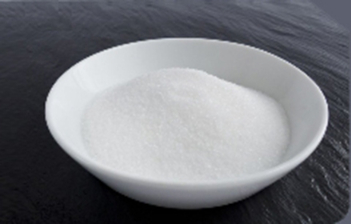Роль и влияние триполифосфата натрия (STPP) в пищевой промышленности
Введение
Триполифосфат натрия (STPP) - универсальная пищевая добавка, широко используемая для улучшения качества и увеличения срока хранения различных пищевых продуктов. Этот белый кристаллический порошок выступает в качестве заливочного агента, улучшителя качества и стабилизатора, внося значительный вклад в эффективность пищевой промышленности. Однако чрезмерное потребление STPP может иметь негативные последствия для здоровья, что обуславливает необходимость его регулируемого использования.
Функции триполифосфата натрия в пищевых продуктах
1. Средство для отдушки
STPP действует как агент, вступающий в реакцию с водой в продуктах питания и образующий пузырьки углекислого газа, увеличивающие объем и пушистость выпечки. Эта реакция делает хлеб, пирожные и тесто более мягкими и улучшает их вкус, способствуя улучшению общей текстуры и вкуса.
2. Предотвращение потерь воды
Одна из ключевых функций STPP - образовывать устойчивые комплексы с водой в продуктах питания, уменьшая потерю влаги и испарение. Это особенно важно для мясных продуктов и морепродуктов, где он помогает сохранить первоначальное содержание влаги, обеспечивая нежную и сочную текстуру.
3. Сохранение цвета продуктов
STPP взаимодействует с ионами металлов в продуктах питания, предотвращая их обесцвечивание, сохраняя их внешний вид ярким и привлекательным. Это свойство особенно полезно для мясных продуктов, морепродуктов и водной продукции, где оно задерживает изменение цвета и выцветание.
4. Стабилизация уровня pH
Являясь слабым щелочным веществом, STPP нейтрализует кислые ингредиенты в продуктах питания, регулируя уровень pH. Такая стабилизация имеет решающее значение для повышения общей стабильности пищевых продуктов и увеличения срока их хранения.
5. Действует как антиоксидант
STPP связывается с кислородом, уменьшая окислительные реакции в продуктах питания и препятствуя их порче. Это антиоксидантное свойство особенно важно для продуктов, склонных к окислению, таких как масла и мясные продукты.
Потенциальные риски для здоровья при чрезмерном потреблении STPP
Несмотря на то, что СТПП обладает многочисленными преимуществами при переработке пищевых продуктов, длительное чрезмерное потребление может представлять опасность для здоровья. Исследования показали, что чрезмерное потребление STPP может привести к:
- Дисфункция кишечной флоры
- Повреждение слизистой оболочки кишечника
- Повышенная нагрузка на почки
- Негативное влияние на здоровье костей
Чтобы снизить эти риски, очень важно соблюдать соответствующие национальные стандарты и правила, касающиеся использования STPP в пищевых продуктах. Обеспечение разумного и контролируемого использования необходимо для сохранения здоровья потребителей.
Заключение
Триполифосфат натрия (STPP) играет важную роль в пищевой промышленности, выполняя различные функции, такие как увеличение объема и пушистости, сохранение влаги, сохранение цвета, регулирование уровня pH и действие в качестве антиоксиданта. Однако необходимо ответственно подходить к использованию STPP и соблюдать установленные нормы, чтобы избежать потенциального риска для здоровья, связанного с чрезмерным потреблением.
ЧАСТО ЗАДАВАЕМЫЕ ВОПРОСЫ
В каких продуктах обычно содержится STPP?
- STPP широко используется в хлебобулочных изделиях, мясных продуктах, морепродуктах и переработанных продуктах питания для улучшения текстуры, удержания влаги и стабильности цвета.
Как STPP помогает сохранить цвет продуктов?
- STPP связывается с ионами металлов в продуктах питания, уменьшая их влияние на цвет, что помогает сохранить яркий и привлекательный внешний вид.
Существуют ли какие-либо риски для здоровья, связанные с STPP?
- Чрезмерное длительное употребление STPP может привести к дисфункции кишечной флоры, повреждению слизистой оболочки, увеличению нагрузки на почки и потенциальным проблемам со здоровьем костей.
Регулируется ли использование STPP?
- Да, использование STPP регулируется национальными стандартами и правилами, чтобы обеспечить его безопасное применение и соблюдение допустимых пределов.
Может ли STPP выступать в качестве антиоксиданта в продуктах питания?
- Да, STPP может связываться с кислородом, уменьшая окислительные реакции и препятствуя порче и повреждению продуктов.

